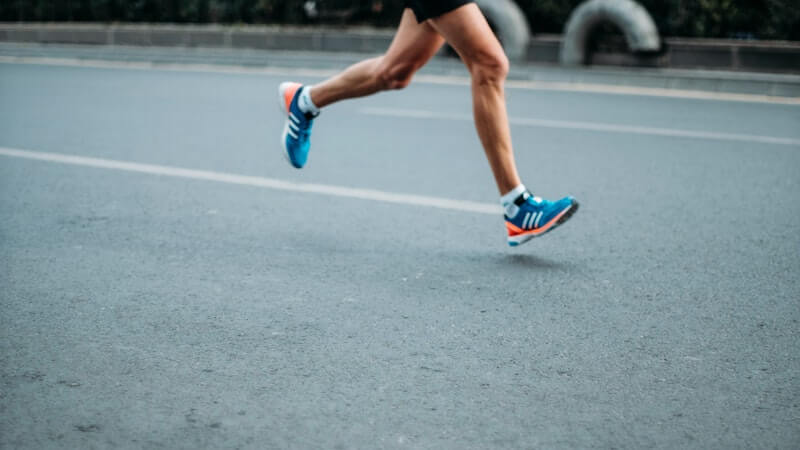Cardio 101
Episode #6 of the course Hack your workout: A self-paced system for core muscle and posture strength by John Robin
Welcome to Day 6 of our course!
Now that we’ve covered the strength and stretching exercises, it’s important to talk about the final component.
Get ready for Cardio 101!
Why Do Cardio?
Building your core posture muscles and stretching them effectively boosts their potential to perform well. But they also require an effective blood supply for oxygen and waste removal. The ability of your heart and blood vessels to efficiently deliver and remove blood is called your cardiovascular endurance.
You improve this through cardio exercises.
Examples:
• brisk walking
• running
• cycling
• swimming
• elliptical machine
The Three Types of Cardio
There are three types of exercises to develop your cardiovascular endurance:
• Long-Intensity Steady State (LISS)
• High-Intensity Steady State (HITT)
• VO2 Max
You’ll recognize these from the microcycle sheet I shared on Day 2, since these make up the main three columns of the final “CARDIO” section.
Let’s talk about each.
Long-Intensity Steady State. A LISS workout involves working out at the same intensity for at least 40 minutes. Your heart rate will increase to about 165-170 bpm (beats per minute) by about 15-20 minutes into the workout, then stay there until the 40-minute mark.
If you are running, then keeping the same intensity means maintaining the same pace. You improve by increasing your pace.
For example, if you run at 9 km/h, then keep it there. If your heart rate only went up to 162 bpm, then in your next run, increase to 9.1 km/h and see if your heart rate gets into the target 165-170 bpm goal.
This workout develops your aerobic endurance. Aerobic endurance is your ability to keep sufficient levels of oxygen in your blood while you exercise. The better your aerobic endurance, the more energy you will have in your day-to-day life.
High-Intensity Interval Training. A HIIT workout involves exerting to your absolute maximum for a period of 20-30 seconds, then dropping to an idle pace for 90-120 seconds. You repeat this five to six times in a HIIT workout. At the end of each 20-30-second period, your heart rate will hit its maximum potential, about 180-190 bpm, depending on your age.
If you are running, then this exertion is done through an intense sprint. You improve in your successive HIIT workouts by exerting as hard as possible. Your body improves by increasing speed and decreasing heart rate for a given exertion.
For example, if you can sprint at 17.2 km/h for 20-30 seconds, and your heart rate hits 186 bpm, then in your next HIIT workout, when you push your hardest, you might find you hit 17.2 km/h with heart rate 184 bpm, or you might instead hit 17.5 km/h and heart rate 187 bpm. Both of these are improvements.
This workout develops your anaerobic endurance. Anaerobic endurance is your ability to exert without oxygen in your blood. The better your anaerobic endurance, the better you’ll be able to exert yourself in high-energy activities, like climbing stairs or shoveling snow.
VO2 Max. A VO2 Max workout involves exerting as hard as you can, for as long as possible.
A good benchmark is 14 minutes. Your heart rate will reach about 175-180 bpm within the first two to three minutes and stay there until the end.
If you are running, then you’ll probably find that you achieve VO2 Max pace at about 130% of your LISS pace. If your LISS pace is 9 km/h, this means your VO2 Max pace will be 11.7 km/h. Your body will tell you, so don’t force yourself to do 130%. Do whatever pace gets your heart rate up to 175-180 bpm and keeps it there until you hit 14 minutes.
This workout increases your aerobic capacity. Aerobic capacity is the amount of oxygen your blood can carry at once.
This is a great way to increase your aerobic endurance, which further boosts your LISS performance and in turn, gives you even more energy in your day-to-day life.
Putting Them All Together
An ideal ratio of runs to do each microcycle is:
• three LISS runs
• one HIIT run
• one VO2 Max run
Record the vital stats for each in the sub-columns on the microcycle sheet.
This 3:1:1 mix will help you gain better cardiovascular potential by working all three aspects of cardio together each microcycle. If you can’t get in five cardio sessions / microcycle, then I recommend you do two LISS runs and one VO2 Max run. We’ll talk more about this kind of adjusting on Day 10: Strategies for Continued Strength Gains.
Stay tuned for tomorrow, when we’ll dig into advanced strength training.
Recommended book
Advanced Marathoning by Pete Pfitzinger and Scott Douglas
Share with friends

